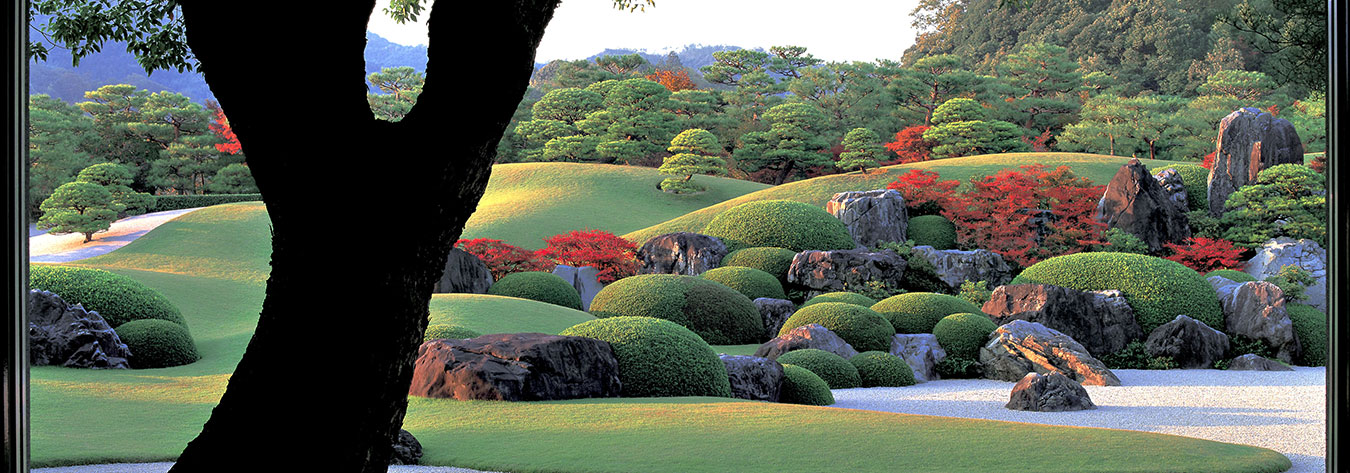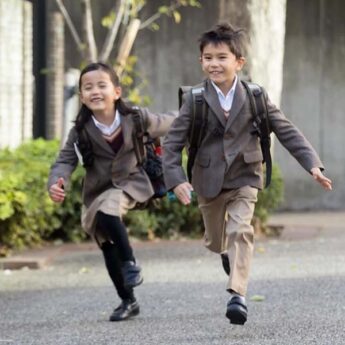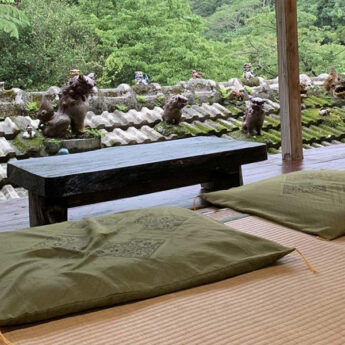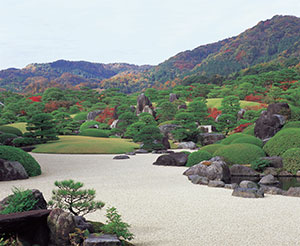
Adachi Museum’s landscape garden is a popular attraction.
Between April 2015 and March 2016, some 24,000 visitors from abroad put it on their travel itinerary. While tourists from the US topped the rankings among Westerners, the French came second and Brits third.
Wataru Takeda, a manager at the museum, explained that the museum is “an independent institution open to everyone”.
“We wish to be a valued and proud member of Yasugi City, and our goal is to be a must-visit museum for tourists and expats in Japan”, he added.
Established in 1970 to develop Japanese art and nurture promising Japanese painters, the museum houses about 1,500 works—including paintings, sculptures and ceramics—by masters of Japanese art.
Among the museum’s star attractions are the work of such artists as Taikan Yokoyama (1868–1958), known simply as Taikan, who co-founded the Nihon Bijyutsuin (Japan Art Institute), and Seiho Takeuchi (1864–1942), a master painter of the pre-war era.
Taikan’s collection of 120 works is particularly noteworthy. Among these are the famous suibokuga (ink wash paintings), which are complemented by works in deep colours, such as his screen masterpiece, Autumn Leaves.
Another of the museum’s main attractions is the spectacular landscape garden. According to the museum’s founder, Zenko Adachi, the garden is “a picture scroll; a living painting”.
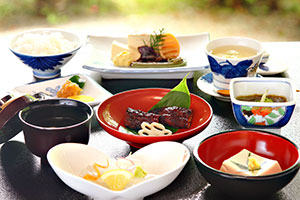
Devotional food, which contains neither fish nor meat, is famous in Yasugi City.
The Journal of Japanese Gardening, published by the US-based Japanese Gardening Organization—a multinational, non-profit organisation that is spreading the benefits of Japanese gardening for individuals, groups, communities and society—has given the garden its top ranking since 2003.
To complement its regular exhibits, the museum’s displays are changed each season. In addition to a recently completed two-storey annex, housing around 200 masterpieces by contemporary Japanese painters, there is a theatre, where visitors can learn more via explanations of the exhibited works and films.
In addition to appreciating its artistic offerings, visitors to Shimane are encouraged to explore and experience its many craft activities and local cuisine.
At the Hirose-gasuri Center, you can take part in traditional indigo dyeing. Hirose-gasuri are intricate and detailed patterns created on cotton by weaving different shades of indigo by hand.
Typical designs feature images of pine, bamboo, plums, cranes and turtles. The designs are customarily used on items such as cushions for brides or on clothing and bedding. This dyeing process has been designated an intangible asset of the prefecture.
To satisfy your tastebuds, meanwhile, a number of venues offer traditional vegetarian shojin-ryori (devotional food), which contains neither fish nor meat. A staple of trainee monks of local Buddhist temples, the dish typically includes intricately prepared dishes using tofu and mountain vegetables, seasoned with vegan dashi (stock) or soy sauce.
